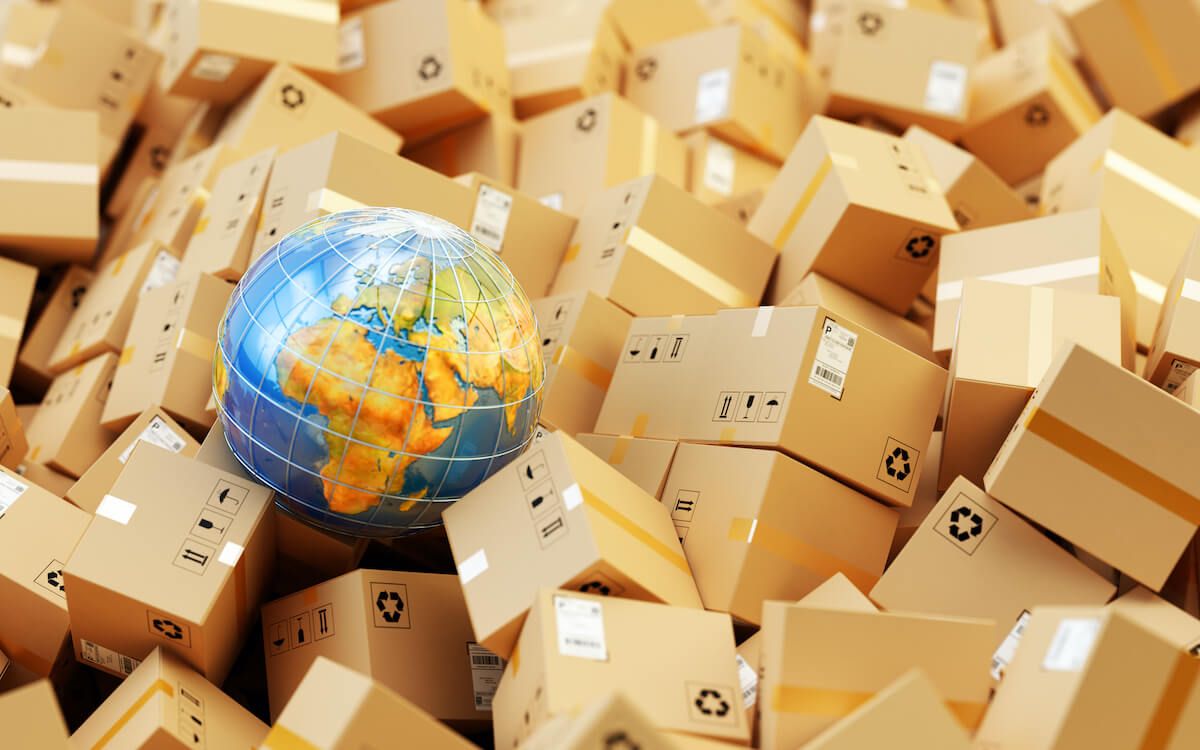
If you’re ready to open the borders of your online store and start catering to international customers, you probably have questions about shipping internationally. Do high shipping costs and longer order wait times outweigh the benefits of targeting a new audience? While the answer to that question depends on your own goals and the nature of your business, you can rest easy knowing that hundreds of businesses like yours find international shipping both feasible and profitable. Here’s how to get started:
1. Research Your Options
There are a number of different carriers that can ship your products overseas, and the best fit for you depends on where you’ll be shipping, how much you’ll be shipping, and how quickly you want your products to arrive. If you’re shipping small or light items, USPS Priority Mail International is probably your best option. Their flat-rate boxes are almost always the cheapest way to send items under 20 pounds across the pond. If you plan on shipping many things overseas to specific countries, leveraging regional fulfillment centers in your target locations may be cheaper than shipping and warehousing your products yourself for international orders.
2. Calculate Your Average Costs
Knowing exactly how much shipping costs can help you make sure you don't under- or over-price your shipping options for your customers. International customers generally expect to pay more in shipping, but that doesn't mean they’re willing to settle for any price. To calculate your average shipping costs, add your domestic AOV (Average Order Value) to a shipping rate calculator. Run the numbers for each country where you plan on selling, testing different regions within that country when needed.
Once you’re done calculating your average costs, find the smallest and largest orders you’ve had domestically and run the numbers again using this range. Your averages can inform the base price for shipping costs, while the extremes will highlight possible instances of cost anomalies that will hurt your margins.
For instance, if your smallest-ever order costs you $2.35 to ship overseas, your largest-ever costs $128.30, but your average order is only $13.29, you may want to go with a pricing structure that supports a large number of different shipping costs (we’ll cover this in #4). However, if the range between your lowest and highest order is fairly narrow, a flat rate may be your best option.
3. Decide Who’s Paying Import Fees
In addition to the shipping cost itself, there will be import taxes and fees associated with your shipment. As the seller, you have the option to pay for these yourself or have the buyer pay for them. International buyers are used to paying these fees, but covering them yourself might improve conversions. Consider testing both options to see which one has the higher return for your business.
4. Determine Your Pricing Structure
Depending on how you've priced your domestic orders, the structure of your international shipping prices will most likely mimic the structure you’ve used for domestic shipping. There are three basic ways to price your shipping:
- Free Shipping: In most cases, free shipping is a bad idea for international shipments since the cost of service is so much higher than for domestic shipping. If you sell small, light items with a high price point (think jewelry), you might be able to get away with offering free shipping to incentivize the sale.
- Flat Rate: If you have a fairly consistent rate for your international shipments—most of your packages are the same weight/size, and the price change among countries isn't drastic—flat rate is a simple, cost-effective route for both you and the customer. By choosing flat rate international shipping, you always know exactly what you’ll charge, and your customer always knows exactly what to expect. This reduces abandoned carts from last-minute cost surprises during checkout.
- Calculated Rate: If your products are variable in size and weight, it may be a good idea to have your customers calculate their own shipping rate when they check out. For a customer service win, set up live shipping rates so your customer can calculate their shipping as they shop.
5. Never Stop Testing
As with all things ecommerce, the key to success with international shipping is testing. If the rates you’ve set aren’t working, or if macro events like COVID impact the feasibility of your current strategy, you’ll want to notice and understand why as early as possible so you can strategize. Testing promotions and price changes can also help increase your conversion rate.
Final Thoughts
As you look to sell internationally, don't forget about the fulfillment side and its boons and costs. Pricing your shipping costs appropriately to maximize sales while minimizing returns, abandoned carts, and your own costs is an important part of the process. In the end, though, the results are worth it: increased revenue, and the chance to make customers happy all over the world.











